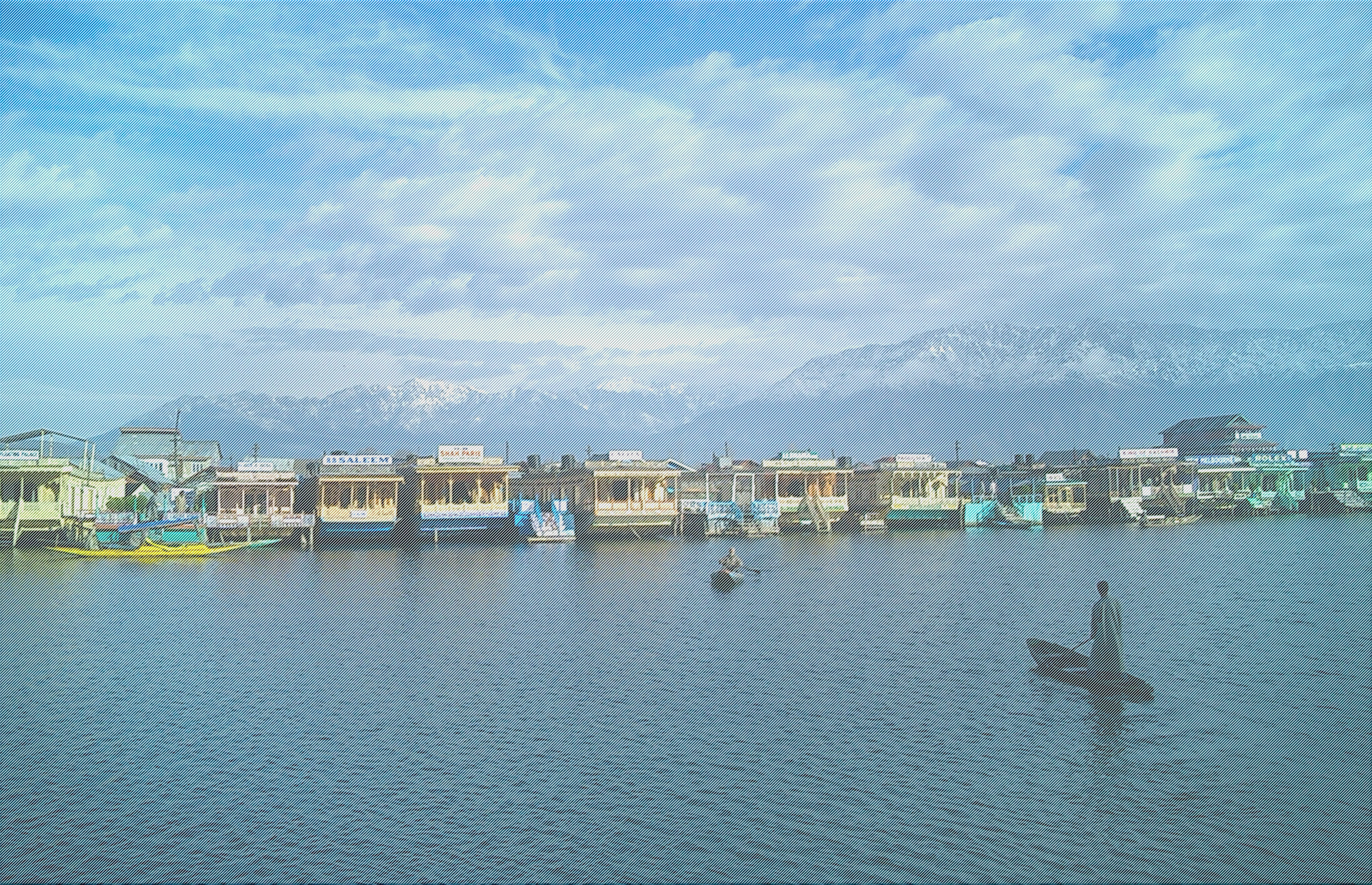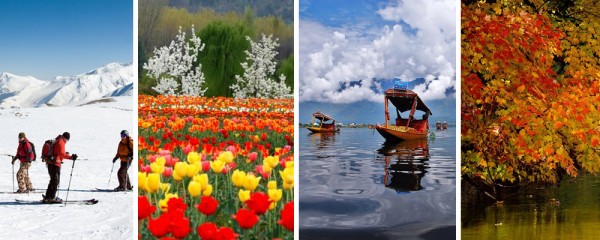Sightseeing in Srinagar is commonly done by taxi. Another way of seeing the city, especially the lake area, is by shikara. It is particularly pleasure to row over the waters of the Dal Lake to visit the Mughal Gardens and other lakeside sites, including the famous Hazratbal mosque.
The well-known sights in the city are Shankaracharya Temple atop the hill called Takht-e-Suleiman, a 5 km climb from Nehru Park on a metalled road. Across the city is another, much lower hill crowned by the Hari Parbat Fort, built by an Afghan governor of Kashmir in the 18th century. The low wall enclosing the upper part of the hill was constructed by Emperor Akbar. On the hill are several famous places of worship: the temple of goddess Sharika, the shrine of Muslim saint Makhdoorn Sahib, and the historic Sikh Gurudwara Chatti Padshahi.
Hazratbal Mosque
Hazratbal Mosque is located in a village of the same name on the banks of the Dal. Its pristine white marble elegance is reflected in the waters of the lake.
Hazratbal’s special significance is derived from the fact that it houses a hair of the prophet Muhammad. This is displayed to the public on religious occasions, usually accompanied by fairs. Apart from these occasions, Friday prayers are offered at Hazratbal and attended by throngs of people. Hazratbal is remarkable for being the only domed mosque in Srinagar; the others having distinct pagoda like roofs. The shrine – mosque complex is situated on the western shore of the Dal Lake opposite Nishat Bagh and commands a grand view of the lake and the mountain beyond.
Jama Masjid
The Jama Masjid at Nowhatta, in the heart of the old city, is the other important mosque in Srinagar at which thousands of people congregate for the Friday prayers. Of imposing proportions, the mosque is built around a courtyard and is supported by 370 wooden pillars.
The hushed quiet of the mosque counterpoints the bustle of the old bazaars surrounding it. Originally built by Sultan Sikandar in 1400 AD, and enlarged by his son, Zain-ul- Abidin, it is a typical example of Indo-Saracenic architecture. Destroyed thrice by fire and rebuilt each time, the mosque, as it now stands, was repaired during the reign of Maharaja Pratap Singh.
Shankaracharya Temple
The sacred temple of Shankaracharya occupies the top of the hills known as Takht-I-Sulaiman in the south-east of Srinagar. The site dates back to 250BC. The philosopher Shankaracharya stayed at this place when he visited Kashmir ten centuries ago to revive Sanatan Dharma.
Before this date, the temple was known as Gopadri, as an earlier edifice on the same site was built by king Lalitaditya in the 6th century AD. In fact, the road below the hill, with residences of high- ranking State Government officials, is still known as Gupkar road. Built on a high octagonal plinth and approached by a flight of steps with side walls that once bore inscriptions, the main surviving shrine consists of a circular cell. It overlooks the Valley and can be approached by a motorable road. A modern ceiling covers the inner sanctum and an inscription in Persian traces its origin to the reign of Emperor Shah Jehan. The original ceiling was dome- shaped and the brick roof, it appears, is not more than a century old.
Khanqah of Shah Hamadan
Situated on the banks of the river Jhelum, between the third and fourth bridge, it is the first mosque ever built in Srinagar. The original one was built in 1395.
Shah Hamadan’s full name was Mir Sayed Ali Hamadni, the surname being derived from the city of Hamadan in Persia. Shah-i-Hamdan, who came from Persia in the 13th century, was responsible for the spread of Islam in Kashmir. Khanqah-i-Mualla, on the banks of the Jhelum, was the very spot where Shah-i-Hamdan used to offer prayers.
After staying in Kashmir for many years, he left for Central Asia via Ladakh.A mosque established by him at Shey (near Leh) attracts devotees from far and wide.
The Khanqah is a wooden structure whose chief aesthetic feature is its beautifully carved eaves and hanging bells. The interiors are richly carved and painted, and the antique chandeliers give it an air of opulence.
Hari Parbat Fort & Temple of Sharika Devi
The Mughal emperor’s fort crowns the top of Hari Parbat hill. There is little left of its former glory, but the ramparts are still impressive and the old apartments within the fort, even though in a state of ruin, still convey at least a little of the grandeur of the Mughals’ summer retreat in ‘paradise’. The fort was later developed in 18th century by an Afghan governor, Ata Mohammad Khan. The hill is considered sacred to the Hindus due to the presence of temple of Sharika, which is believed to be a form of goddess Durga or Shakti. The wall around the hill was built by Akbar in 1592-98 AD. The hill is surrounded by almond orchards, which make a lovely sight during April when the trees blossom, heralding the advent of spring in Kashmir.
Makhdoom Sahib
On the southern side of the Hari Parbat hill is the historic shrine of Makhdoom Sahib, which is visited by people of all faiths.




Comments